There’s a quiet magnetism in Research Natural Areas (RNAs)—pockets of protected wild that call to those of us who seek to understand the living mosaic of California. These places are often the last intact natural systems on our public lands—and for decades, I’ve been drawn to them, trekking into these living sanctuaries to witness nature in its most undisturbed form, to document its story, and to carry that story forward.
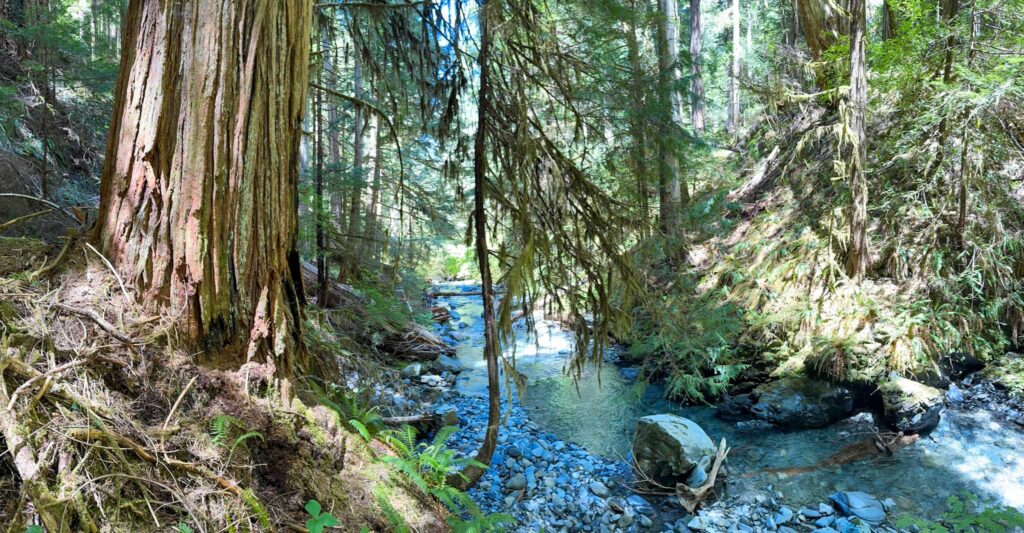
The Origins of California’s Research Natural Areas: Todd Keeler-Wolf’s Legacy
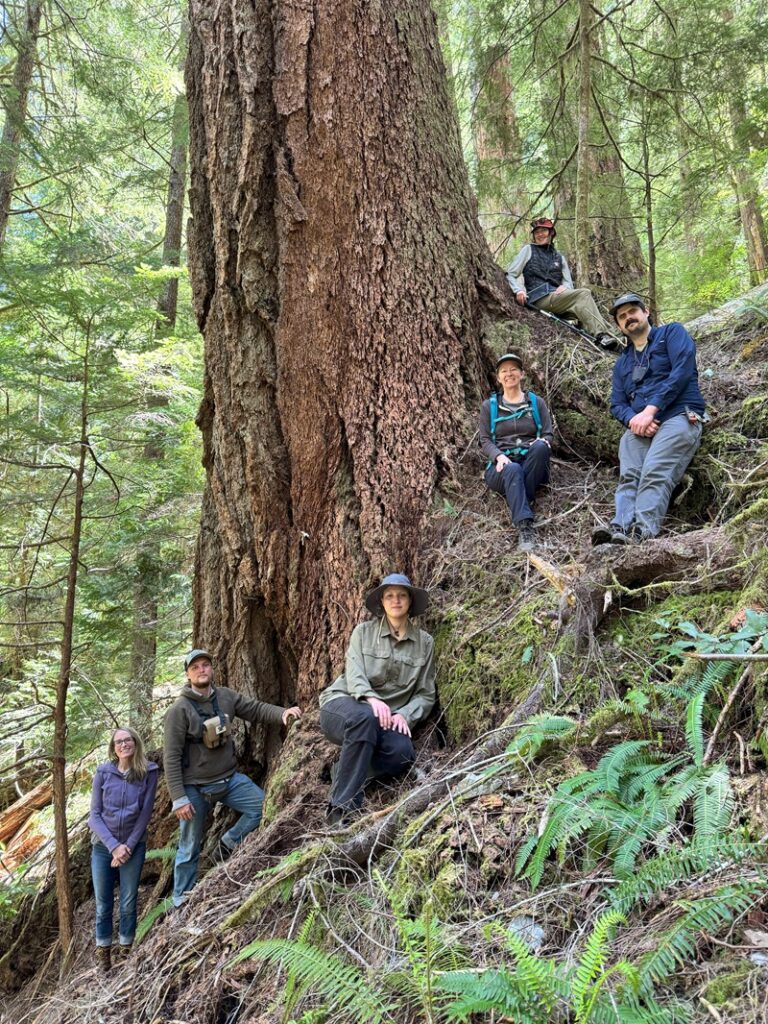
29’6” circumference •
60’ crown •
240’ tall
In the early 1980s, Todd Keeler-Wolf began defining California’s Research Natural Areas as a contractor for the U.S. Forest Service. His work helped establish a network of reference ecosystems that would serve as benchmarks for scientific study and conservation. With only topo maps, handwritten notes, and an unrelenting curiosity, Todd shaped a vision for RNAs that continues to guide vegetation science in the West.
Revisiting a Research Natural Area Four Decades Later
This spring, I returned to one of these RNAs with Todd, now a mentor and friend, as part of the Klamath Mountains Vegetation Mapping Project. Todd hadn’t set foot in the area since his original surveys over 40 years ago. Our group—composed of botanists and vegetation mappers from CDFW, CNPS, and Cal Poly Humboldt—came equipped with modern tools, but our mission remained aligned with his original vision: to document, preserve, and learn from these natural baselines.
A Forest Like No Other: Hemlocks, Cedars, and a New National Champion
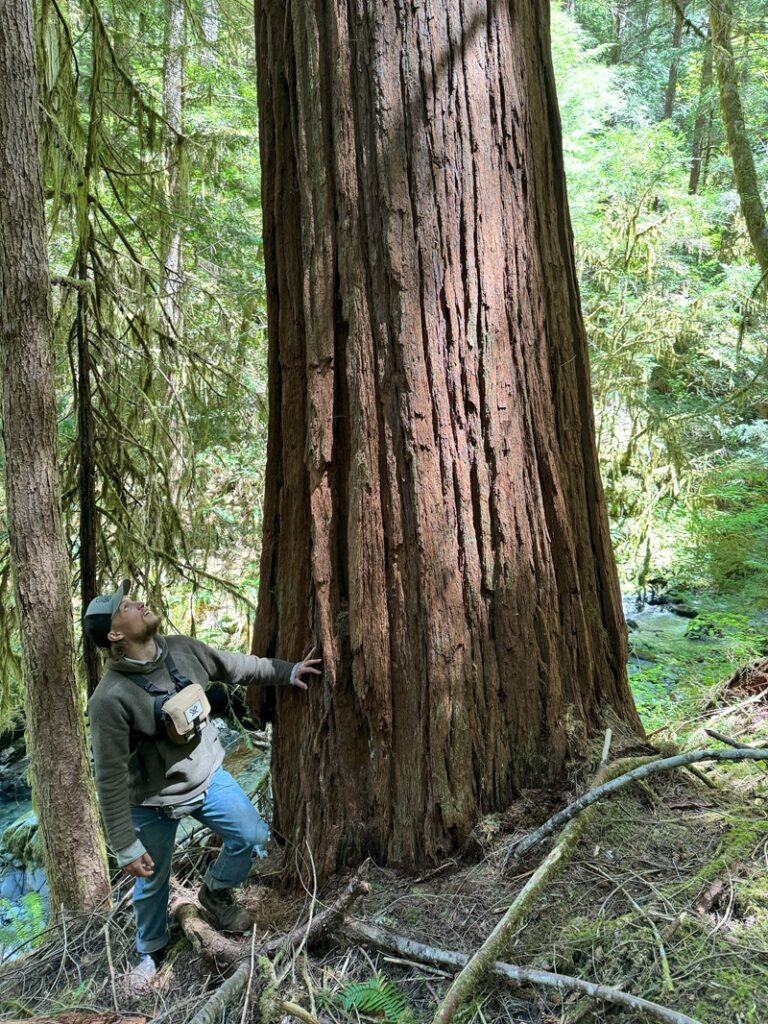
20’8” circumference •
55’ crown •
219’ tall
This Research Natural Area, perched in the northern Klamath Mountains near the Oregon border, shelters a unique vegetation community more typical of southwestern Oregon than California. We mapped a stellar stand of Western Hemlock (Tsuga heterophylla) thriving in cool, shaded slopes. Then, tucked on the other side of the creek, we discovered something extraordinary—a new national champion Port Orford-cedar (Chamaecyparis lawsoniana).
Measuring its diameter and height, we realized we were standing before a record-breaking tree, a hidden giant that has quietly endured for centuries.
Why Research Natural Areas Matter Today
Research Natural Areas are more than ecological preserves; they are living laboratories. These sites provide critical reference points for understanding change—climate, fire, succession, and human impact. Visiting them, especially with someone like Todd who helped define their boundaries, highlights the power of continuity in conservation science. RNAs allow us to see both the resilience of ecosystems and the long arc of ecological stewardship.
Bridging Generations Through Vegetation Mapping
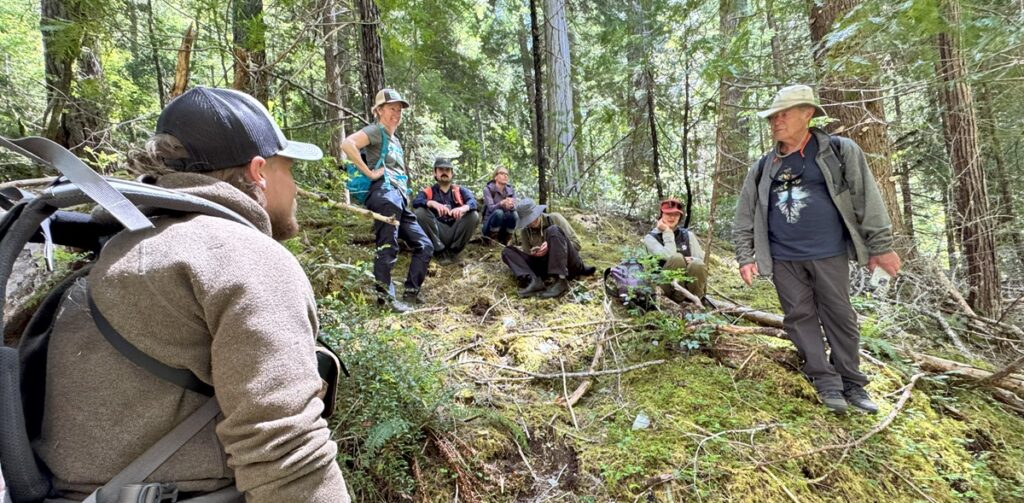
To witness Todd reconnect with a place he cataloged in his youth was deeply moving. Our team—many of whom are early in their ecological careers—listened closely as he recalled plots, species, and shifts in forest character. This moment reminded me that Research Natural Areas are not just about preserving landscapes; they’re about passing knowledge forward.
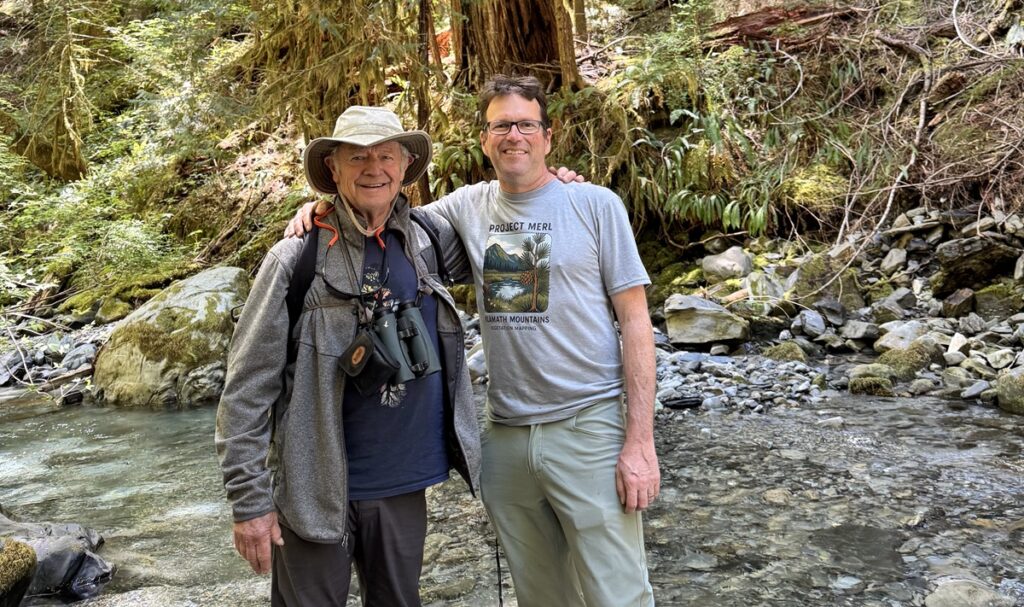
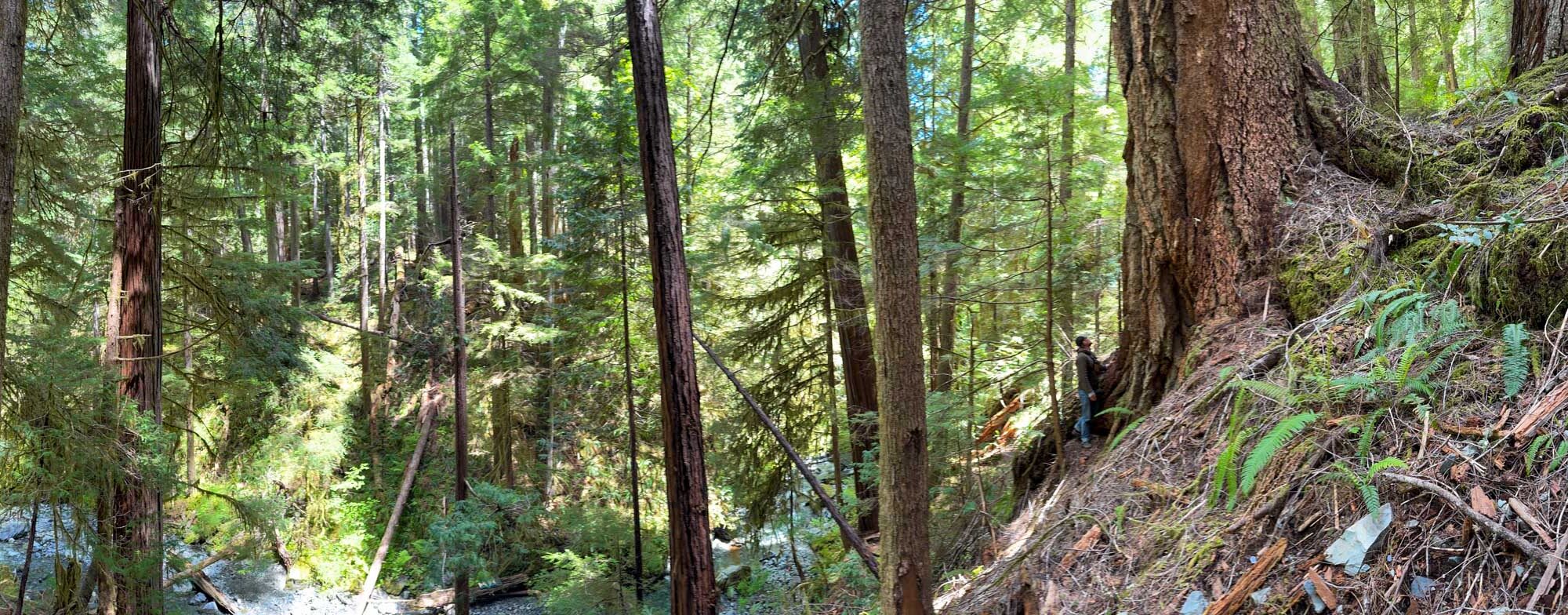
Reminds me of many of the spots I explored in upper Blue Creek and its various tributaries in the 90’s…one of the few areas on the north coast where I found spots that I truly felt that few human eyes or feet had explored
Agreed! Similar forest types.
Wonderful retrospective. And thank you for not disclosing the whereabouts of the RNAs.
Thanks Greg – we also appreciate being able to survey on SLC land!
This is a great project and one that can have a long lineage on through the ages…
Thanks Brett, your work in the northern Sierra is just as inportant.
Important to note that the National Forest System established the first RNAs in 1927 and currently manages about 389 areas via the national wide system of Research Stations. I personally helped provide support for the Metolius RNA on the Sisters RD, Deschutes NF, the second oldest in the nation, for their RX burn projects, as the district environmental coordinator.
Michael – Thanks for sharing this history—it’s incredible that the National Forest System began establishing RNAs in 1927 and now manages nearly 400. Your work on the Metolius RNA, especially one of the oldest, adds valuable perspective. It’s a reminder that these places are part of a much larger legacy of stewardship and science. May they remain preserved.
Great to see Todd is still involved.
To this day I seldom do a field trip to California without checking out Keeler-Wolf’s “Ecological Surveys of Forest Service Research Natural Areas in California”. Have found many memorable spots that way.
Is the hike to the new national champion Port Orford-cedar an overnighter? No need to divelge it’s exact location just curious.
Jim – it’s a long day trip.
Todd Keeler-Wolf actually started doing these surveys sometime in the mid-1970s. I’m not sure if it’s the earliest, but from July 1977 there is “A Survey of the Scientific Values of the Proposed Limekiln Creek Research Natural Area” by Todd and Virginia Keeler-Wolf. That, along with James R. Griffin’s “Ecological Survey of South Fork Devils Canyon Candidate Research Natural Area” from 1976 led to the designation of the Cone Peak Gradient Research Natural Area in 1987. I am stoked to hear that Dr. Keeler-Wolf is still active.